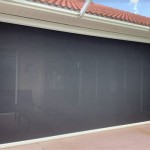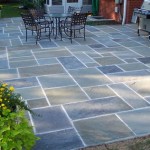Understanding Mortar Joints in Stone Patios
Stone patios offer a durable and aesthetically pleasing outdoor living space. A crucial component of a successful stone patio is the mortar used to fill the joints between the stones. The correct mortar mix, proper application techniques, and appropriate maintenance are essential for longevity, stability, and overall appearance. Understanding the different types of mortar, their benefits, and the challenges associated with their application is paramount for anyone undertaking a stone patio project.
Mortar serves several vital functions within a stone patio. Primarily, it binds the individual stones together, creating a cohesive and stable surface. This prevents the stones from shifting, settling unevenly, or becoming dislodged over time. Secondly, mortar acts as a barrier against water infiltration. When properly applied, it prevents rainwater from penetrating beneath the patio stones, which can lead to erosion, frost heave, and damage to the underlying base materials. Finally, the mortar joints contribute significantly to the overall aesthetic of the patio. The color, texture, and width of the mortar joints can be tailored to complement the stone and enhance the desired design.
Selecting the Right Mortar Mix
Choosing the appropriate mortar mix is a critical first step. The selection depends on several factors, including the type of stone used, the climate, and the desired aesthetic. Several common types of mortar are used in stone patio construction, each with its own characteristics and suitability.
Type S mortar is a popular choice due to its high strength and durability. It is a blend of Portland cement, lime, and sand, offering excellent resistance to compressive forces and freeze-thaw cycles. Type S mortar is well-suited for patios in areas with harsh climates or those subjected to heavy foot traffic. However, its high strength also means it is less flexible than other mortar types, potentially leading to cracking if the patio is subject to significant movement.
Type N mortar, a more flexible option, is also composed of Portland cement, lime, and sand, but with a different ratio of ingredients than Type S. This results in a lower compressive strength but increased flexibility, making it better at accommodating minor movements in the patio structure. Type N mortar is often preferred for patios where some settling or shifting is expected, such as those built on less stable soil.
Polymeric sand is not a traditional mortar but rather a sand-like material mixed with polymers. When activated by water, the polymers bind the sand particles together, creating a semi-rigid joint. Polymeric sand is easy to apply and offers excellent weed control. However, it is less durable than traditional mortar and may require periodic reapplication, especially in high-traffic areas or climates with frequent rainfall. It is best suited for patios where the stones are closely fitted together and minimal joint width is desired.
Pre-mixed mortars are available in various formulations. These mortars offer convenience and consistency, as the ingredients are already pre-proportioned and blended. This ensures a uniform color and texture throughout the patio. However, pre-mixed mortars can be more expensive than mixing mortar from individual components. It is crucial to select a pre-mixed mortar specifically designed for exterior use and compatible with the chosen stone type.
Regardless of the type of mortar selected, it is important to ensure it is compatible with the specific type of stone being used. Some stones, such as limestone, are more porous than others and may be susceptible to staining or damage from certain mortar types. Consulting with a masonry supplier or experienced contractor can help determine the best mortar mix for a particular stone and application.
Preparing and Applying Mortar Joints
Proper preparation and application techniques are just as crucial as selecting the right mortar mix. A clean and stable base is essential for achieving durable and long-lasting mortar joints. Before applying the mortar, the stones must be properly set and leveled on a well-compacted base of gravel and sand. Any loose stones or irregularities in the base must be addressed before proceeding.
The joints between the stones should be cleaned of any debris, dirt, or loose material. This can be accomplished using a wire brush, compressed air, or a hose with a high-pressure nozzle. Thoroughly cleaning the joints ensures a strong bond between the mortar and the stone. In some cases, it may be necessary to dampen the stones slightly before applying the mortar. This helps to prevent the stones from absorbing moisture from the mortar too quickly, which can weaken the bond and lead to cracking.
The mortar should be mixed according to the manufacturer's instructions, using clean water and a mixing paddle or mortar mixer. It is important to achieve a consistent and workable consistency, similar to that of thick paste. Avoid adding too much water, as this can weaken the mortar and make it more susceptible to cracking. After mixing, allow the mortar to slake for about 10-15 minutes. Slaking allows the lime in the mortar to fully hydrate, improving its workability and strength.
Applying the mortar requires careful attention to detail. Using a pointing trowel, carefully press the mortar into the joints, ensuring that it fills the entire space. Avoid leaving any air pockets or voids, as these can weaken the joints and allow water to penetrate. Overfill the joints slightly, as the mortar will shrink slightly as it dries. After filling the joints, use the trowel to strike or tool the mortar, creating a smooth and uniform finish. Several different tooling styles can be used, depending on the desired aesthetic. Common tooling styles include flush, concave, and V-joint.
The mortar should be allowed to cure properly after application. This typically involves keeping the mortar moist for several days, either by covering it with plastic sheeting or by misting it with water regularly. Proper curing allows the mortar to fully hydrate and develop its maximum strength. Avoid allowing the mortar to dry out too quickly, as this can lead to cracking. The curing time will vary depending on the type of mortar, the temperature, and the humidity.
Maintaining Stone Patio Mortar Joints
Even with careful selection and application, mortar joints require regular maintenance to ensure their longevity and performance. Over time, mortar can deteriorate due to weathering, erosion, and the effects of freeze-thaw cycles. Regular inspection and timely repairs can prevent minor problems from becoming major issues.
One of the most common problems with mortar joints is cracking. Cracks can occur for various reasons, including settling of the base, expansion and contraction of the stones, and improper mortar mixing or application. Small cracks can often be repaired by repointing, which involves removing the damaged mortar and replacing it with fresh mortar. Larger cracks may require more extensive repairs, such as replacing entire sections of mortar joint.
Weed growth is another common issue in mortar joints. Weeds can sprout in the joints, weakening the mortar and detracting from the aesthetic appeal of the patio. Regular weeding is essential to prevent weeds from taking hold. Herbicides can be used to kill weeds, but it is important to select a herbicide that is safe for use around stone and mortar. Alternatively, a flame weeder can be used to burn the weeds without damaging the surrounding mortar.
Efflorescence, a white powdery substance that appears on the surface of the mortar, can also be a problem. Efflorescence is caused by the migration of soluble salts from the mortar to the surface. It is generally harmless but can be unsightly. Efflorescence can usually be removed by scrubbing the mortar with a stiff brush and a solution of water and vinegar or a commercially available efflorescence cleaner.
Sealing the mortar joints can help to protect them from water damage, staining, and weed growth. A high-quality masonry sealer can penetrate the mortar, making it more resistant to moisture and other contaminants. It is important to select a sealer that is compatible with the type of mortar used and to apply it according to the manufacturer's instructions. Regular cleaning of the patio can also help to prolong the life of the mortar joints. Sweep the patio regularly to remove dirt, leaves, and other debris. Periodically wash the patio with a mild detergent and water to remove stains and grime.
By understanding the importance of mortar joints, selecting the right mortar mix, applying it properly, and performing regular maintenance, homeowners can ensure that their stone patios remain beautiful, durable, and functional for many years to come. A well-maintained stone patio provides a valuable outdoor living space for relaxation and enjoyment.

This Irregular Flagstone Patio Is Wet Set With Mortar Joints Specially Selected Boulders Are Used As Natur Outdoor Decor Backyard Slate

Result For Flagstone Patio Mortar Joints Bluestone Stones

How To Install A Mortar Set Patio Gresham Or

Love The Stones Mortar Vs Sand In Grout Joints Looks Very White Flagstone Patio Hardscape Backyard Fences

Re Jointing A Patio Or Driveway Pavingexpert

How To Install A Mortar Set Patio Gresham Or

Flagstone Joints Landscaping Network

How To Grout Paving Slabs Infinite

Best Paving Grout Easy Jointing Compound Joint It Simple

Jointing And Pointing For Stone Paving Wet Grouting Pavingexpert








